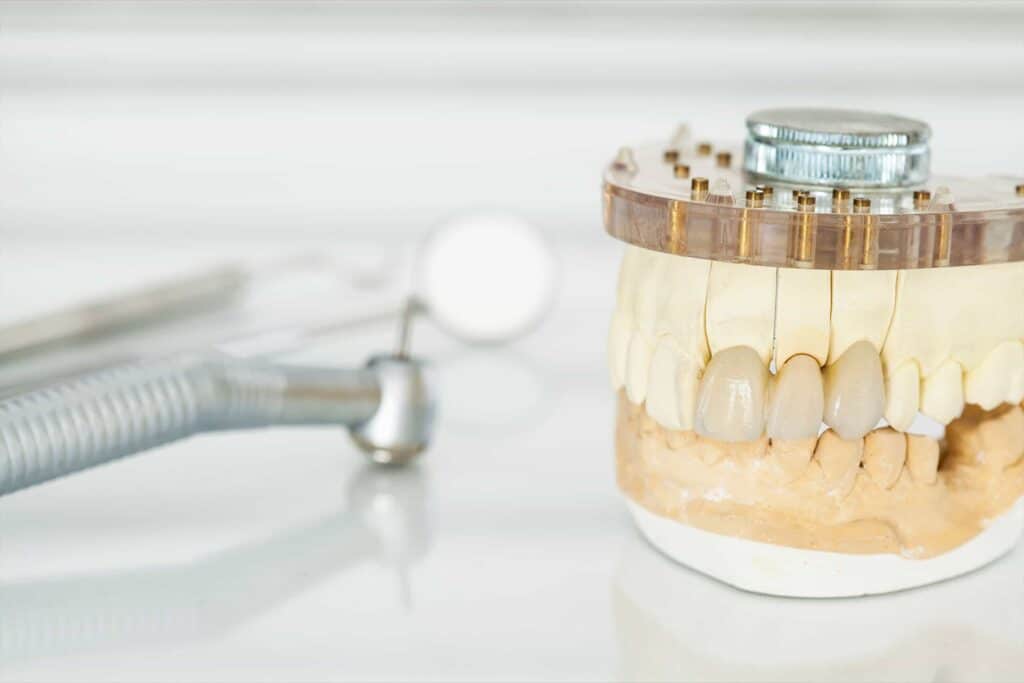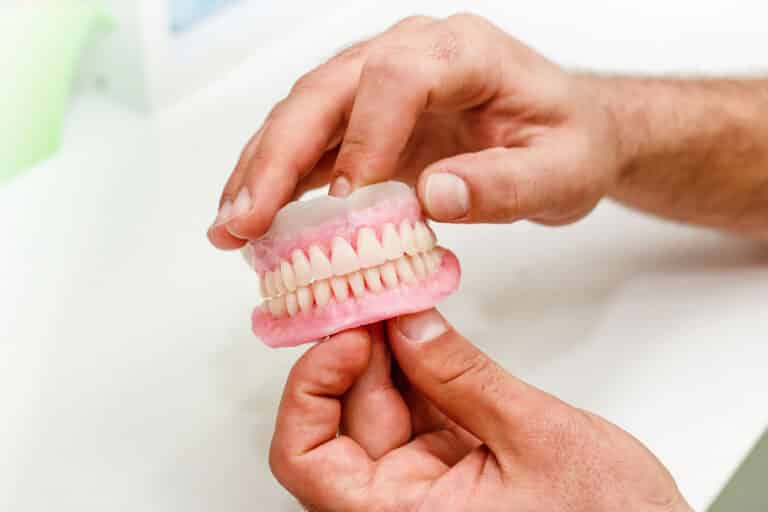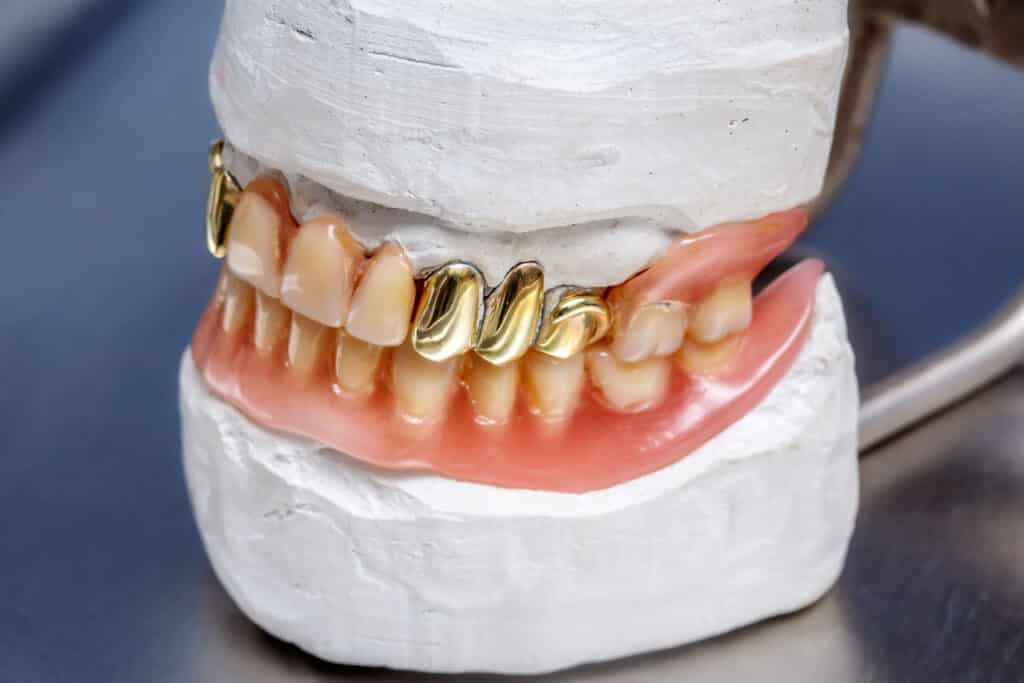Orthodontics offers a multitude of options designed to properly treat misaligned teeth. Traditional metal braces, ceramic braces, lingual braces, and clear aligners such as Invisalign, are all options to address common bite issues such as overbites, underbites, crossbites, and open bites. Additionally they can address crooked teeth, crowded teeth, gaps, and rotated teeth. Each treatment option or method, while unique in its application and appearance, shares the same promise. To give you a healthier mouth, a comfortable bite, and the potential to transform your smile into the one you’ve always dreamed of.
In this article, we will delve into the world of orthodontics, exploring its definition, the role of orthodontists and qualified dentists, and the various types of braces available. We will also discuss how braces work, the pros and cons, what to expect, and the typical timelines for orthodontic treatment.
What Are Orthodontics?
Orthodontics is a specialized branch of dentistry that centers around the diagnosis, prevention, and treatment of dental and some facialThe ‘outside’ surface of the teeth that directly face either the lips or cheeks. abnormalities. Most people know it as a way to get straight teeth. But it’s not just about creating picture-perfect smiles. Orthodontics has a more profound purpose: enhancing oral health and overall well-being.
The muscles, teeth and jaw all work together when you chew, speak, and smile. If they are not working harmoniously, basic tasks become more difficult. Over time, it increases your risk of problems like tooth decay, gum disease, and temporomandibular joint (TMJ) disorders. Additionally, crooked teeth can affect your self-esteem, confidence, and mental health.
These issues are addressed by the purposeful movement of teeth to improve the bite or occlusion, appearance and/or in preparation for restorative dentistry. In children, orthodontics can also guide facial growth to improve function and esthetics. There are some schools of thought and evidence that this can also be done with adults, albeit not as extensively and much slower than with children.
The classic appearance of orthodontics is the metal brackets attached to the facial surface of teeth with a wire across the front. Newer style of orthodontics involves clear aligners, which are clear molds of plastic that are removable. Completed during adolescence or as an adult, orthodontics is a relatively slow process that can take months to years to fully complete. However, in the end, this treatment can change the appearance, facial structure and smile which is a common insecurity.
What Is The Primary Goal Of Orthodontics?
The primary goal of all orthodontics can be essentially boiled down to moving a tooth or teeth to an idealized position. While seemingly simple and straightforward, it can get very complicated. The teeth, gums, and jaws must be in harmony to work appropriately in order to last a lifetime. If teeth are contacting dysfunctionally, it can lead to many potentially debilitating problems over time. Here are a few goals of orthodontic treatment:
- Correct Malocclusion – As a general rule of thumb, when the teeth are in the correct position they last longer. When teeth are in the idealized position, the posterior teeth protect the anterior teeth and vise versa during function. When the teeth are not correctly protecting each other, it can lead to excessive wear, fracture, problems in the temporomandibular joint (TMJ) as well as collapse of the vertical dimension of occlusion (VDO).
- Improve Esthetics – This is typically the primary reason most people seek orthodontic treatment: straight teeth. Spacing and crowding can both be unaesthetic, so even if the malocclusion isn’t severe, people will still seek orthodontic treatment to reposition teeth in a more aesthetically pleasing fashion.
- Optimally Position Teeth for Restorative Work – When there is insufficient or excessive space for restorative work such as crowns or implants, teeth need to be repositioned for the best outcome. An instance where this is relevant is when teeth shift into the space of a previously extracted tooth. There needs to be adequate space to replace the missing tooth. If the adjacted teeth have drifted too much, orthodontics is required to move teeth to recapture that space.
- Change Facial Features – While a much more uncommon reason for orthodontics, repositioning teeth can change how a face appears. This is most noticeable when looking in the profile view for an underdeveloped jaw. By moving some of the teeth around, it is possible to provide more lip support and give a minor ‘facelift’. Although not typically a primary chief complaint, this can be a secondary benefit to orthodontic treatment.
What is the Ideal Occlusion?
The ideal occlusion is a concept of harmonious contact between the teeth of the upper and lower jaw that supports the skeletal structures and joints, protects the teeth during regular use, and is aesthetically pleasing. Due to the variance in humans, there is no cookie-cutter occlusion that is ideal for everyone. Instead, the aim is to give each individual their own ideal bite. While the specifics will vary from provider to provider, here are a few things dentists and orthodontists are looking for:
- Approximately 20% overbite. The maxillary incisors should cover about 20% of the mandibular incisors when biting down.
- Minimal overjet. The maxillary anterior teeth should be just anterior to the mandibular anterior teeth.
- Class I canine relationship. This is defined as the mesialThe surface of the tooth that is between teeth and is closest to the midline. of the upper canine touching the distalThe surface of the tooth that is between the teeth and is furthest away from the midline. of the lower canine.
- Class I molar relationship. This is defined as the mesiobuccal cusp of the upper first molar occluding with the buccalThe same surface as ‘facial’ but technically only on posterior teeth. groove of the lower first molar.
- Physiologic rest position. This is the natural position of the jaws that positions the temporomandibular joint in a naturally restful position and eliminates pathologic muscle movements. This may not be achievable without changing the shape of the jaws themselves.
Why Is The Ideal Occlusion Important?
The ideal occlusion is important because it increases the odds of long-term success of your teeth. In other words, your teeth last longer with pain-free joints. When in the ideal position, the teeth are able to not only function properly, but they also better protect themselves from overuse. Many people grind their teeth, a condition known as bruxism. Since teeth are unique bones that do not regenerate, bruxism leads to a multitude of long term problems. They can include:
- Fracturing of teeth
- Excessive wear
- Collapsed vertical dimension of occlusion (VDO)
- Pain in the TMJ, also known as temporomandibular joint disorder
While these conditions can take many years to manifest symptoms, the definitive solution is extensive and expensive once the symptoms become severe enough. For instance, excessive wear on the teeth wears the teeth down to nubs, collapsing the VDO and requires full mouth reconstruction (FMR) to correct the issue. FMR requires placing crowns on almost all, if not all, of the teeth to reestablish the bite and realign the jaws.
Additionally when the teeth are in the ideal occlusion, the back and front teeth can protect each other during eating in a term called mutually protected occlusion or canine guidance. Since humans are omnivores, our teeth are shaped with the intent to either bite and tear or grind. The front teeth are used to bite and tear while the back teeth are used to chew up and grind the food into smaller particles. Since the front and back teeth have different purposes, they are shaped differently and during chewing and grinding the front teeth protect the back and the back teeth protect the front at the same time. When teeth are not positioned ideally, they are more prone to fracturing and premature wear.
Do I Need To See A Specialist For Orthodontic Treatment?
You do not necessarily have to see a specialist for your orthodontic treatment. Many skilled general dentists are capable of treating you. The severity of the case is typically what determines the level of training and experience that is required.
An orthodontist undergoes specialized training to be able to treat all cases, ranging from an underbite to tooth-sized discrepancy issues. However, simple relapse cases where the upper or lower front teeth become crowded after being previously straightened are rather straightforward. The level of education and experience plays the biggest role in the competency in the correction of crooked teeth as well as the use of appliances, both removable and fixed.
A big factor that should be considered is how comfortable you are with the provider. You should feel confident in who is providing your treatment. Additionally, the location of the office plays a role as well since you will likely have to make frequent visits for checkups.
What are the risks of orthodontic treatment?
While there are a few risks associated with braces, most of the risks are minor and with proper planning can be avoided. However they can still occur and can still need additional treatment.
Gum Recession From Braces
Receding gums is one of the risks associated with braces. This can occur when the teeth are proclined excessively to achieve better results. This can result in the tooth getting pushed out of the jawbone itself, resulting in receding gums.
Root Resorption
The roots of teeth may ‘blunt’ or resorb to a degree either during or after orthodontic treatment. This is usually detected on x-rays on checkups. There are typically no other symptoms associated and the teeth feel otherwise normal. This only becomes an issue if there is a significant amount of bone loss, which makes the teeth loose. We currently do not know the exact reason why this happens and there is nothing that needs to be done should this occur.
Bone Resorption
On occasion, the bone surrounding teeth may resorb at an accelerated pace, resulting in very loose teeth. This typically occurs during treatment and is often detected by the orthodontist or dentist treating you. Unfortunately this can compromise the nerve within the affected teeth, resulting in the need for root canal treatment.
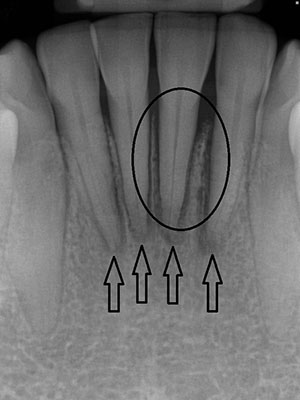
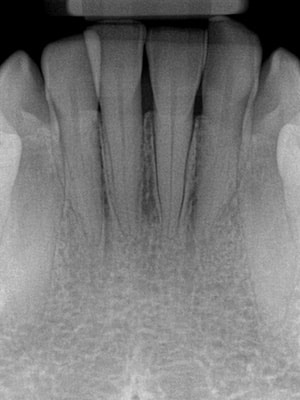
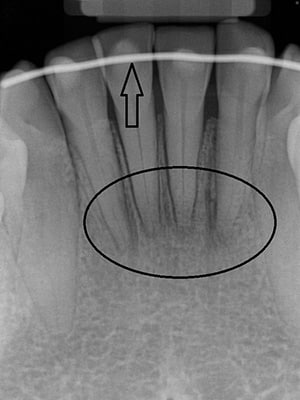
Compromised Results
While not a true ‘risk’, ideal results may not be achievable without major surgery or even at all. This is largely due to any discrepancies in the upper jaw or lower jaw. For instance a lower jaw that is excessively large would need to be resected for ideal results. For most people, this doesn’t apply and excellent results can still be achieved.
What Are The Different Types Of Braces?
Multiple types of braces are available. Some are fixed, while others are removable, and sometimes they use bands or other devices. Today, there are several types of braces available, each with its advantages and drawbacks.
Traditional Metal Braces
When most people think of braces, they picture traditional wire braces. These braces are made up of small metal brackets that are cemented to the front of your teeth, with a thin wire running through the brackets. This wire is periodically tightened, applying pressure to your teeth and guiding them into the desired position. Traditional metal braces pull teeth into position as opposed to clear aligners which push.
Traditional braces are a time-tested treatment that can correct a wide range of dental misalignments. In complicated cases, metal braces are the most effective or only choice1Proffit, William R., et al. Contemporary Orthodontics. 6th Edition, Elsevier/Mosby, 2018..
However, traditional braces are the most noticeable type of braces. For this reason, they may not be the ideal choice for adults or self-conscious teens who prefer a more discreet treatment option. Nonetheless, modern advancements have made these braces smaller and less noticeable than they used to be.
Advantages of Metal Braces
One of the biggest reasons to use brackets and wire is that there are some tooth movements that are better or only possible with brackets. One of these movements is extrusion or pulling a tooth out of the gums into the mouth. This is required when a tooth needs help fully erupting or has erupted far away from where it should have.
For example, a canine can erupt severely out of alignment or be impacted with the closest access to the palate. When this occurs, a metal bracket is required to be able to pull the tooth into place. Imagine a rock embedded in concrete with only a small area of rock visible. There is no way to push the rock out, but you can attach an anchor to the rock and pull it out.
Another advantage of metal braces is no compliance is required. Since the patient cannot remove them, there is no need to worry about keeping track, losing, or wearing the brackets and wire.
Disadvantages of Metal Braces
One of the biggest disadvantages of brackets is the difficulty required for proper hygiene. It is incredibly important that during orthodontic treatment the teeth are well maintained. Since the wire and brackets are always present, the patient must spend significantly more time on proper dental hygiene. Flossing, in particular, can be very time consuming, since the floss will need to be threaded between each tooth.
Other disadvantages include poor aesthetics and trauma to the soft tissues. Many view metal brackets as ugly and there is a general stigma around getting metal braces as an adult. Additionally those who participate in sports, especially contact sports, are at a much higher risk of cutting the cheeks and lips.
Ceramic Options
If you are seeking a more discreet option than metal braces, ceramic braces might be the answer. These braces work the same way as traditional braces, but instead of metal, the brackets are made of a tooth-colored ceramic material. This makes them less noticeable, especially from a distance.
Ceramic braces can be an excellent choice for adults who want to maintain a professional appearance while undergoing orthodontic treatment. They can correct a wide range of dental malalignments just as effectively as traditional metal braces.
However, ceramic braces can be more expensive than their metal counterparts. They require careful maintenance as the ceramic material can stain. Additionally they are more prone to fracture due to the inherent properties of ceramics as compared to metal. Despite these drawbacks, many patients find that the aesthetic benefits of ceramic braces outweigh their drawbacks.
Lingual Braces
For those seeking a truly invisible orthodontic treatment, lingual braces may be an option. These braces are similar to traditional braces but are placed on the back of your teeth, making them invisible when you smile. Lingual braces use the same mechanism as traditional braces, applying pressure to your teeth to guide them into the correct position.
They offer the advantage of being completely unnoticeable, making them an excellent choice for adults and teens who are concerned about their appearance.
However, lingual braces can be more difficult to clean due to their location. They can also be more uncomfortable, as the braces are in close proximity to your tongue. Additionally, lingual braces are often the most expensive orthodontic treatment option due to the complexity of placement and adjustment. For these reasons, your orthodontist or dentist may not even offer lingual braces as an option.
Clear Aligners (Best Known As Invisalign)
In the realm of modern orthodontics, clear aligners, such as Invisalign, are growing increasingly popular. These are clear trays that fit snugly over your teeth and gradually guide them into the desired position. While not totally invisible, they have a much better esthetic appearance than traditional metal braces.
This style of orthodontics has gained immense popularity partly due to increased technology, in particular 3D printing technology. This style of orthodontics pushes teeth into position as opposed to metal braces, which pull. Attachments, or compositeA synthetic resin that is used for while fillings. This is what most people receive when they get fillings. material in various shapes and forms, are commonly bonded to the facial surface in order to move the teeth better.
Clear aligners are custom-made for your teeth and are made of a clear, BPA-free plastic material. You will receive a series of aligners, each designed to make small adjustments to the alignment of your teeth. You will need to wear each aligner for one to two weeks before moving on to the next in the series.
Advantages of Clear Aligners
One of the biggest advantages of clear aligners is the improved esthetics and ability to clean. Historically metal braces, especially for adults, have been seen as unattractive and unaesthetic. This can be a deterrent for those who would otherwise want straight teeth but because clear aligners are almost invisible, most people won’t even notice you’re wearing them.
Another big advantage is the fact the trays can be removed. This means you can take them out when eating, drinking, brushing, and flossing. This makes maintaining your oral hygiene much easier compared to traditional braces.
Additionally, clear aligners have the ability to move multiple teeth simultaneously. Different teeth can be pushed on at the same time, potentially resulting in a shorter treatment time as opposed to wire and bracket orthodontics.
Disadvantages of Clear Aligners
While there are many advantages, clear aligners are not without disadvantages. The big one is compliance. How compliant someone is to wearing the aligners as prescribed will dictate the timely success of treatment. Clear aligners are supposed to be worn 22 hours a day – they are only supposed to be removed to eat and for oral hygiene.
The teeth will not move as scheduled if someone doesn’t wear them as directed. This can pose a problem with an age group that regularly receives orthodontic treatment: teenagers. As a big generalization, teenagers are known to be more rebellious or complacent than other age groups. Ensuring compliance with clear aligners is going to be key to its success.
Other disadvantages include the inability or difficulty in performing certain movements. While clear aligners are extremely effective and able to do a vast majority of the same movements as metal braces, there are a few movements that are impossible. One such movement is moving an impacted canine as previously mentioned. From time to time, canine teeth are partially or completely encased in bone, and not even visible from inside the mouth. When this happens, the canine must be exposed and have a traditional wire bracket placed and pulled into place. Clear aligners cannot complete this movement along with a few others.
What’s The Difference Between Clear Aligners (Invisalign) And Metal Braces?
Orthodontics uses techniques and instruments that will move teeth in a specific direction whether that be rotation, tipping, procline, or intruding to name a few. The two most common methods to complete orthodontic movements are clear aligners and brackets. It should be noted that clear aligners are commonly known as Invisalign, however Invisalign is the specific brand and clear aligners refers to the methodology, similar to how Kleenex is a brand of facial tissues. Brackets can be either metal or porcelain, however metal is much more commonly used.
The biggest difference between the two methods is a push vs pull type movement. Clear aligners push teeth while metal braces pull. Imagine someone trying to move a box from point A to B: that person can either stand behind the box and push or stand in front of the box and pull. In the end the box is still moved from A to B, but the methodology was different. Even with a different methodology, it is well known that clear aligners are an effective treatment option for orthodontic work2https://www.ncbi.nlm.nih.gov/pmc/articles/PMC8992363/.
How Do Braces Move Teeth?
The basic principle remains the same regardless of the type of braces: applying gentle, sustained pressure on your teeth to guide them into a new position.
The prevailing theory is when braces apply pressure to your teeth, the tissue surrounding your teeth gets compressed on one side and stretched on the other. This causes the bone on the compressed side to break down, creating space for the tooth to move into. Meanwhile, on the stretched side, new bone grows to fill in the space left by the moving tooth3https://pubmed.ncbi.nlm.nih.gov/26599117/.
When Should I See An Orthodontist?
Many people believe that orthodontic treatment is only for teenagers, but this is not the case. The reality is orthodontic problems can arise at any age, and treatment can be successful for both children and adults.
That said, the American Association of Orthodontists (AAO) recommends children have their first orthodontic evaluation by at least seven years of age. This is a prime time to detect potential issues as the jaw is still developing and the permanent teeth are beginning to come in. Early detection can allow for preventative measures and simpler, more effective treatment.
Adults, on the other hand, can seek orthodontic treatment at any time. However the earlier the treatment is completed, the more benefit that will be had over the lifetime.
When Should I Start Orthodontic Treatment For My Kids?
As mentioned above, the American Association of Orthodontists recommends children have their first orthodontic evaluation by at least the age of seven. This doesn’t necessarily mean your child will need braces right away, but it allows the dentist or orthodontist to monitor their growth and development and identify any potential problems.
Early treatment – also known as Phase 1 or interceptive treatment – can start as early as age 6 or 7 and is typically recommended when there is a moderate or severe orthodontic problem that should not wait until later to be treated. This early intervention can make the second phase of treatment (when all the permanent teeth have erupted) shorter and less complicated.
Phase 2 usually involves full braces and begins when most or all the permanent teeth have come in, usually around the ages of 11 to 13. It’s worth noting that every child’s development is unique, so the best time to start treatment may vary.
When Should I Not Get Orthodontic Treatment?
While orthodontic treatment can be incredibly beneficial for most people, there are situations where it may not be recommended. For example, if you have severe gum disease (periodontitis), this condition should be addressed before beginning orthodontic treatment. This is because the movement of the teeth can exacerbate gum problems, leading to a risk of tooth loss. However those with compromised bone are not completely excluded from orthodontic treatment, but they do require special planning.
Similarly, if you suffer from significant bone loss, braces or other orthodontic appliances may not be suitable, as there may not be enough bone to support the teeth during movement. Additionally the quality of the gums needs to be good prior to initiating orthodontic treatment. If there is not enough bone or quality gum tissue, alternative treatments may be recommended.
It’s also worth noting that orthodontic treatment requires a commitment to good oral hygiene and regular dental appointments. If you’re unable or unwilling to maintain good oral hygiene or commit to regular orthodontic appointments, then orthodontic treatment may not be the best option for you.
Finally, while braces and clear aligners can correct a wide range of orthodontic problems, they’re not always the best solution for everyone. In some cases, other treatments such as veneers or crowns may be more suitable. It’s essential to discuss your options with your orthodontist or dentist to determine the best course of treatment for your individual needs for optimal oral health4https://www.ncbi.nlm.nih.gov/pmc/articles/PMC88948/.
What Are The Benefits Of Orthodontic Treatments?
Orthodontic treatment offers multiple benefits that extend beyond a straighter smile. When your teeth and jaws are well-aligned, they function more efficiently, promoting better oral health. Proper alignment also makes it easier to brush and floss, reducing the risk of tooth decay and gum disease. This is important for those who have problems with manual dexterity.
A well-aligned bite also improves your ability to chew and speak. It can relieve excessive wear on the teeth, reduce the risk of injury to protruding front teeth, and lessen the likelihood of developing TMJ disorders.
In addition, orthodontic treatment can enhance your appearance, contributing to improved self-esteem and confidence. A straight, attractive smile can have a positive impact on your social, personal, and professional life.
In terms of health benefits, studies have shown that orthodontic treatment can even improve overall health. Misaligned teeth and a bad bite can contribute to problems such as indigestion and heart disease due to improperly chewed food, not to mention headaches and face or neck pain. By correcting these issues, orthodontic treatment can contribute to improved general health4https://www.ncbi.nlm.nih.gov/pmc/articles/PMC88948/.
What Are The Typical Timelines For Orthodontic Treatment?
The length of orthodontic treatment depends largely on the complexity of the case, the type of treatment chosen, and the patient’s age. Generally speaking, treatment with braces typically lasts between 6 months and three years.
Phase 1 treatment in children, which is aimed at addressing specific issues that should not wait until later, typically lasts about 6 to 12 months. This typically occurs at a younger age where not all the permanent teeth have erupted. Afterward phase 1 is completed, a resting period follows where the remaining permanent teeth are allowed to erupt.
Phase 2, involving full braces, usually begins around the ages of 11 to 13, and usually takes around 12 – 24 months.
Treatment with clear aligners, like Invisalign, usually takes between 12 to 18 months, but this can vary widely depending on the severity of the misalignment. More minor cases can sometimes be completed in as little as 6 months. Keep in mind that the exact timeline is not an exact science, meaning that the predicted treatment time is an estimate5https://www.ncbi.nlm.nih.gov/pmc/articles/PMC6340199/.
Remember, these are averages. Your individual treatment timeline may be shorter or longer based on your specific needs and how quickly your body responds to treatment. The important thing to remember is that orthodontic treatment is a journey, and the result – a healthy, beautiful smile – is worth the time invested.
How Much Should I Pay For Orthodontic Treatment?
The cost of orthodontic treatment varies greatly depending on your individual needs, the complexity of your case, the type of treatment you choose, and the region in which you live. As a general range, you can expect traditional metal braces to cost between $3,000 and $7,000.
Ceramic braces tend to be slightly more expensive, with costs typically ranging from $4,000 to $8,000. Lingual braces, due to their complex placement and adjustment usually cost the most, often costing between $8,000 and $10,000.
Clear aligners usually range from $3,000 to $8,000. Remember, these are averages, and in complex cases, the costs could be higher.
It’s important to understand that these costs usually cover the entire treatment, including the initial consultation, delivery of the braces, monthly visits for adjustments, any emergency visits, retainers after the treatment, and follow-up visits after treatment. Make sure to ask your orthodontist what is included in your treatment plan3https://pubmed.ncbi.nlm.nih.gov/26599117/.
Does Dental Insurance Cover Orthodontics?
Many dental insurance plans do provide coverage for orthodontic treatment, but it’s important to note that coverage varies widely depending on the plan. Some plans may cover a percentage of the treatment cost, up to a certain limit, while others pay a fixed amount regardless of the total cost.
There may also be age limits for coverage, with some plans only covering orthodontic treatment for patients under the age of 18 or 19. They often have a once in a lifetime benefit as well, meaning that specific insurance company will only cover braces once.
If you have dental insurance, check with your provider to see what orthodontic benefits you have. Many offices also offer flexible payment plans to help make treatment more affordable, so don’t hesitate to ask about these options as well.
Additionally, Health Savings Accounts (HSAs) or Flexible Spending Accounts (FSAs) often can be used to pay for orthodontic treatment. These accounts allow you to contribute pre-tax dollars to pay for eligible healthcare expenses, which can result in significant savings.
Conclusion
Orthodontics is a life-changing journey that can boost your self-confidence, improve your oral health, and give you the smile you’ve always dreamed of. While the cost may seem significant, remember that it’s a worthwhile investment in your health and well-being. Whether you opt for traditional braces, ceramic braces, lingual braces, or clear aligners, the result is a healthier, happier you.
Was this post helpful?
Table of Contents
- What Are Orthodontics?
- Do I Need To See A Specialist For Orthodontic Treatment?
- What are the risks of orthodontic treatment?
- What Are The Different Types Of Braces?
- What’s The Difference Between Clear Aligners (Invisalign) And Metal Braces?
- How Do Braces Move Teeth?
- When Should I See An Orthodontist?
- When Should I Start Orthodontic Treatment For My Kids?
- When Should I Not Get Orthodontic Treatment?
- What Are The Benefits Of Orthodontic Treatments?
- What Are The Typical Timelines For Orthodontic Treatment?
- How Much Should I Pay For Orthodontic Treatment?
- Does Dental Insurance Cover Orthodontics?
- Conclusion
References
- 1Proffit, William R., et al. Contemporary Orthodontics. 6th Edition, Elsevier/Mosby, 2018.
- 2
- 3
- 4
- 5


